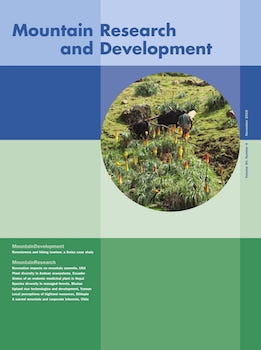We appreciate Dr Loehle's comments (Loehle 2010) on our recent article (Bao et al 2010). We agree with his contention that the peat zones we analyzed using 210Pb dating for short-term carbon (C) accumulation history are within the acrotelm (aerobic layer), and further analyses are necessary to evaluate the status of peatlands in the Changbai Mountains. However, we disagree with his view that our analysis needs to take account of loss of peat mass and fails to contribute to global C budgets.
As stated in our paper and shown by previous research (eg Turetsky et al 2004), it is important to focus research efforts on C cycling of recently accumulated peat, not only because global warming will most likely affect the mass balance near peat surfaces where peat temperature fluctuates with air temperature, but because estimating short-term rates of peat accumulation in the acrotelm is still poorly understood and studied relative to assessing the long-term rate of C accumulation. In addition, the 210Pb dated interval of peat (the last 100–150 years) is generally assumed to be acrotelm only, even though we know that acrotelm may best be defined by water table depths (Yu et al 2001). This is why we quantified recent rates of C accumulation by collecting and examining short peat cores (< 45 cm), but did not provide additional data on onsite water-level monitoring and measurements to distinguish between the near-surface layer (acrotelm) and the underlying layer (catotelm).
Dr Loehle states that “unfortunately, their analysis assumed that there is no loss of peat mass to the atmosphere.” In fact, it is possible to neglect peat decomposition when only estimating apparent rates of C accumulation from the thickness of peat deposits. We think Dr Loehle may not have taken account of the 3 rates of estimation of C accumulation, namely, the long-term (apparent) rate of C accumulation (LORCA), the recent (apparent) rate of C accumulation (RERCA), and the actual net rate of C accumulation (ARCA). LORCA and RERCA are analogous and can be estimated for a given peatland from peat columns of known (dry) bulk density, C content, and age. Differences exist in age determination. The former dates the basal peat and the latter is based on the given dated horizon in a surface core. ARCA can only be estimated by modeling approaches like Clymo-type peat accumulation (eg Clymo 1984) and is lower than the apparent rate of C accumulation because the slow decay that takes place in the anoxic deeper layers is ignored in this approach (Tolonen and Turunen 1996). We multiply bulk density (g/cm3) and depth (cm) to calculate cumulative peat mass (g/cm2), and then use 210Pb ages and C contents to calculate recent C accumulation rates (g/cm2/y) for each pair of dated intervals. The calculated rates are apparent rates—namely RERCA as observed at present from the peat cores—so we do not need to take into account peat loss due to decomposition.
Dr Loehle also thinks that proper estimation of peat accumulation rates in the top zone requires gas exchange measurements integrated over the year, and thus in his view our analysis is unsuitable for global C cycling. We do not agree with this, as we believe he overstates the role of gas exchange measurements in assessing C dynamics in peatlands. It is certainly possible to estimate directly both net primary production and decomposition rates in peatlands. Methodological limitations, however, combined with typically large spatial and temporal variability, lead to substantial errors in extrapolating from direct measurements to annual C budgets in near-surface peat (Turetsky et al 2004). Moreover, peatlands have some unique and complicated features that cannot be easily accommodated in standard ways, as in other ecosystems, because they are ecosystems located between upland and aquatic ecosystems and are commonly inaccessible on the ground (Wieder 2001). Changbai Mountain peatlands are locations where continuous flux measurements are either not available or not feasible. As a result, the method we use is an alternative approach to estimating the short-term C sink capacity of a peatland; it takes advantage of the long-term records stored in vertically accumulating peat and allows for the quantitative estimation of recent rates of organic matter accumulation. For these reasons, we continue to maintain that our results in Bao et al (2010) can contribute to the global C cycle and climate change research as a start in evaluating the Changbai Mountain peatlands.
Open access article: please credit the authors and the full source.





